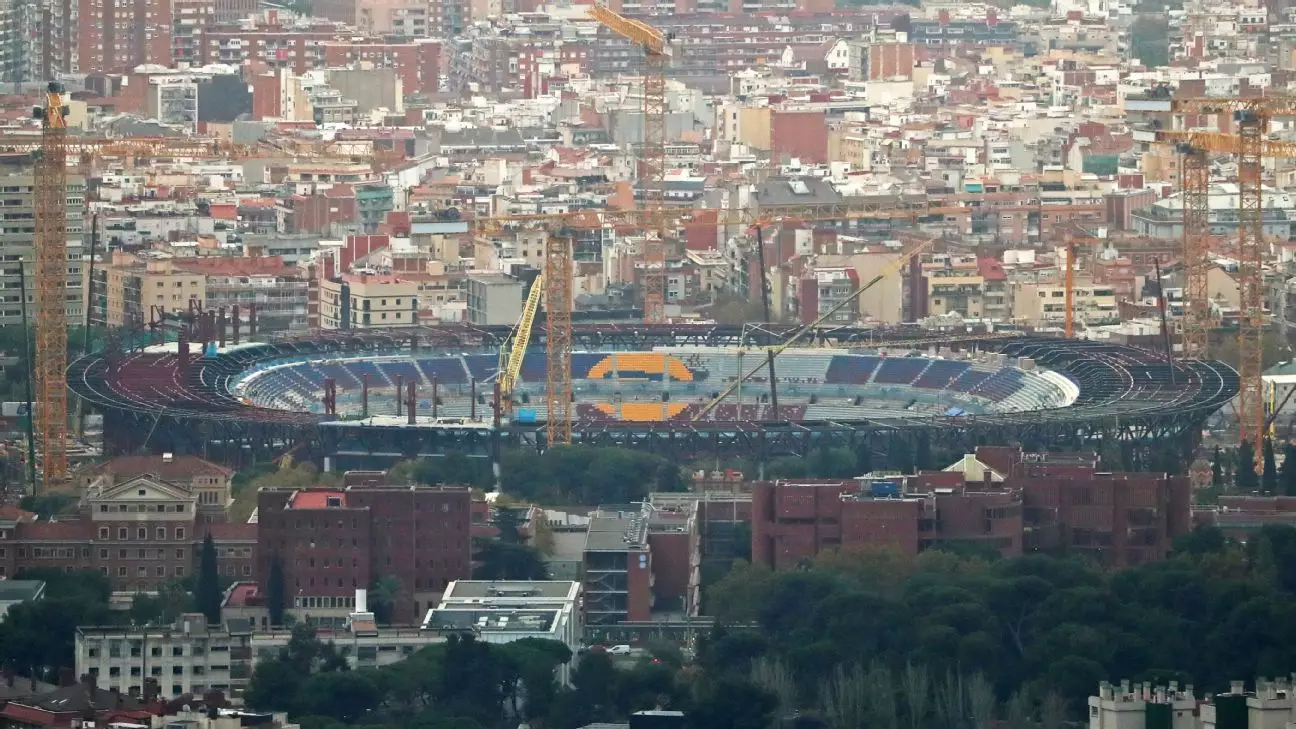The return of FC Barcelona to their iconic home, Spotify Camp Nou, has quickly transformed from hopeful anticipation to a landscape riddled with uncertainty. Initially set to coincide with the club’s 125th anniversary in November, management now contemplates the possibility of a delayed reopening until next season. Despite the optimism expressed by club president Joan Laporta regarding the prospect of returning by March, internal discussions indicate that even this target may be overly ambitious.
The club’s efforts to modernize and redevelop the stadium have run into unexpected obstacles, particularly concerning the second-tier renovations. What was once expected to be a relatively straightforward update has evolved into a more complex scenario requiring additional time and resources. This has heightened questions about the timeline for completion, as fans and stakeholders await clarity on when they will finally return to their beloved venue.
Laporta’s emphasis on a March return appears strategically aligned with the Champions League knockout phase, where hosting vital home matches becomes essential. According to UEFA regulations, once a club has played a home game in the knockout rounds, they cannot alter the venue for subsequent matches, placing pressure on Barcelona to resume operations in Camp Nou promptly. Unfortunately, progress has been hindered by the slow installation of the pitch, a task that historically demands upwards of three months to ensure optimal conditions for elite-level football.
With heavy machinery still occupying the pitch area, the timeline for a return has been imperiled. Club officials are acutely aware that the first home match of the knockout stages eschews venue changes, thus further complicating the situation. It raises the stakes considerably, as Barça strives to prepare everything ahead of time.
Plans for a staggered return to Spotify Camp Nou indicate an effort to manage expectations amidst the ongoing construction. Initial attendance would be capped at approximately 60,000, allowing fans to reconnect with the stadium while bearing in mind that renovations would still be underway. The comprehensive revamp, set to elevate the capacity to approximately 105,000 by 2026, is a critical component of Barcelona’s long-term vision to reinstate their prominence in European football.
As of now, the club has temporarily relocated its operations to the Olympic Stadium, a change made in 2023. The lease at this secondary venue has recently been extended until March, with the option for further extensions should unexpected delays continue. This flexibility provides Barcelona with a temporary lifeline, fostering a hopeful sentiment that the club won’t bring its supporters into the fray until it can sufficiently provide a world-class experience.
The hurdles facing FC Barcelona as they navigate their return to Spotify Camp Nou illustrate a delicate balance of excitement and apprehension. With plans still up in the air, fans are left to navigate their own expectations during this period of uncertainty. The optimistic narrative spun by the club’s leadership must contend with the reality of construction timelines, regulatory limitations, and the pressing need to deliver a premier experience worthy of their storied history. As the club looks toward the future, the challenge will lie in translating these ambitious plans into successful outcomes.

